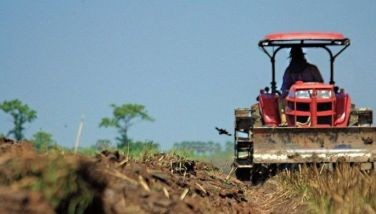RP forest is one wide ‘foodworld’ — DENR-ERDB
March 7, 2004 | 12:00am
You need not go hungry when lost in the woods.
That is, if you know the country’s forest as one wide "foodworld".
For instance, did you know that the blossoms (young flowers) of the jade vine are eaten as vegetables? These are prepared as salad in the same way as katuray blossoms.
Did you know, too, that the young leaves of alibangbang are eaten raw as a side dish to rice? They are cooked with soups, stews, or meat and fish dishes.
The fruits (berries) of bignai may be eaten raw, or made into excellent wine, or a refreshing drink. It is sometimes used as a substitute for tomato or vinegar in the preparation of certain dishes.
The tacca flour (starch) or yabyabin (a course herb) forms an agreeable food when eaten with sugar. Mixed with white flour, tacca is used in making bread.
Did you also know that the seeds of wild sunflower may be eaten roasted like peanuts? These can also be processed into good cooking oil.
Jade vine, alibangbang, bignai, yabyabin, and wild sunflower are but among the country’s rich reserve of wild and semi-wild food plants that could be found in the forest or in grassland ecosystems.
Other trees and plants whose leaves are edible are himbabao, niog-niogan, pako, kakawate, pongapong, quiapo, puriket, pitogo, kandikandilaan, bangkoro, and aunasin.
Those with edible fruits are aklumpit, katmon-kalabau, susong-kalabau, talong-talongan, tibig, atibulnak and dikai.
Others plants whose parts (stems, rhizome/root, buds, pods, saps, seeds) are edible are biga, langkuas, malabulak, pugahan and pukinggang-baing.
"Many indigenous groups as well as a number of upland people depend on these wildfood plants for their subsistence," stated Director Celso Diaz of the Los Baños-based DENR-Ecosystems Research and Development Bureau (ERDB), which documented these in a publication "Food from the Wilderness".
Diaz pointed out that food-bearing plants offer great potential in augmenting scarce food supply, particularly in uplands where these plants abound.
He concluded: "The cultivation of wildfood plants as alternate agricultural crops can help enhance the lives of many Filipinos."— Rudy A. Fernandez
That is, if you know the country’s forest as one wide "foodworld".
For instance, did you know that the blossoms (young flowers) of the jade vine are eaten as vegetables? These are prepared as salad in the same way as katuray blossoms.
Did you know, too, that the young leaves of alibangbang are eaten raw as a side dish to rice? They are cooked with soups, stews, or meat and fish dishes.
The fruits (berries) of bignai may be eaten raw, or made into excellent wine, or a refreshing drink. It is sometimes used as a substitute for tomato or vinegar in the preparation of certain dishes.
The tacca flour (starch) or yabyabin (a course herb) forms an agreeable food when eaten with sugar. Mixed with white flour, tacca is used in making bread.
Did you also know that the seeds of wild sunflower may be eaten roasted like peanuts? These can also be processed into good cooking oil.
Jade vine, alibangbang, bignai, yabyabin, and wild sunflower are but among the country’s rich reserve of wild and semi-wild food plants that could be found in the forest or in grassland ecosystems.
Other trees and plants whose leaves are edible are himbabao, niog-niogan, pako, kakawate, pongapong, quiapo, puriket, pitogo, kandikandilaan, bangkoro, and aunasin.
Those with edible fruits are aklumpit, katmon-kalabau, susong-kalabau, talong-talongan, tibig, atibulnak and dikai.
Others plants whose parts (stems, rhizome/root, buds, pods, saps, seeds) are edible are biga, langkuas, malabulak, pugahan and pukinggang-baing.
"Many indigenous groups as well as a number of upland people depend on these wildfood plants for their subsistence," stated Director Celso Diaz of the Los Baños-based DENR-Ecosystems Research and Development Bureau (ERDB), which documented these in a publication "Food from the Wilderness".
Diaz pointed out that food-bearing plants offer great potential in augmenting scarce food supply, particularly in uplands where these plants abound.
He concluded: "The cultivation of wildfood plants as alternate agricultural crops can help enhance the lives of many Filipinos."— Rudy A. Fernandez
BrandSpace Articles
<
>
- Latest
Latest
Latest
March 4, 2024 - 3:32pm
By Ian Laqui | March 4, 2024 - 3:32pm
March 4, 2024 - 2:12pm
By Kristine Daguno-Bersamina | March 4, 2024 - 2:12pm
February 17, 2024 - 2:31pm
February 17, 2024 - 2:31pm
February 13, 2024 - 7:24pm
By Gaea Katreena Cabico | February 13, 2024 - 7:24pm
February 13, 2024 - 7:17pm
By Ian Laqui | February 13, 2024 - 7:17pm
Recommended


























